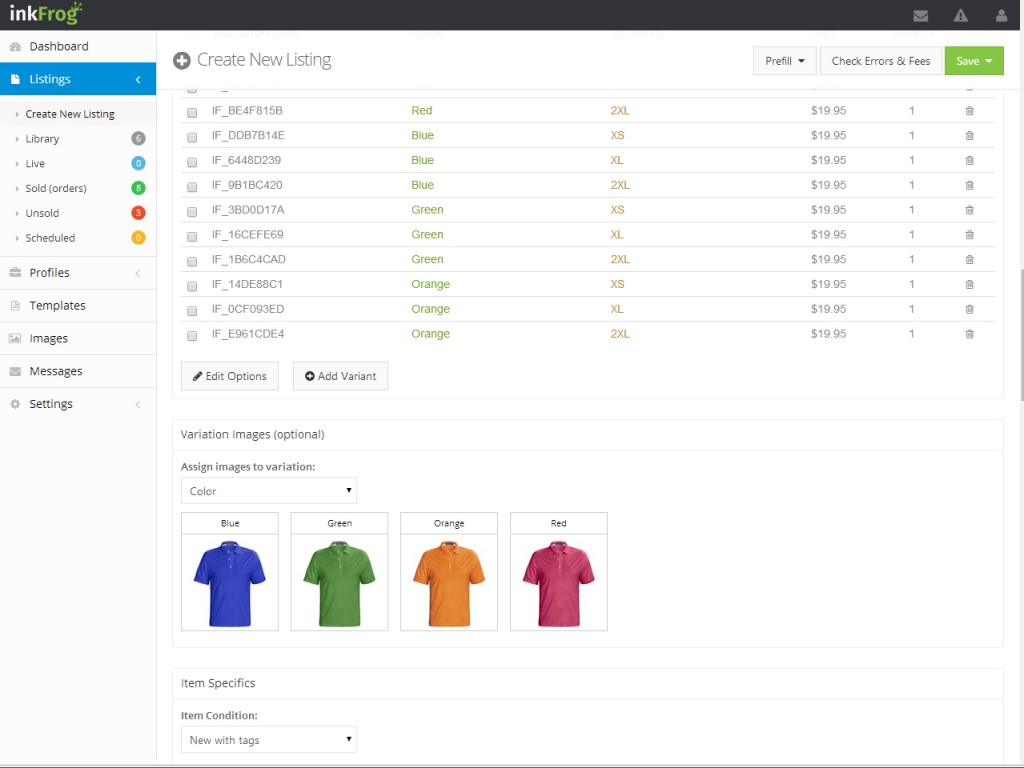eBay has been one of the leading online marketplaces for as long as we care to remember. It's success is partly to do with it's age. eBay began in 1994, a time where selling online was a new idea. Many businesses at this point had just utilised the internet for message sending and advertising properties. However rumours have it that the "golden age" of eBay are quickly coming to end. Our Shopify experts have analyzed the reasons why more and more sellers are now looking for self hosted shops as an eBay alternative.
A little history of eBay
eBay originally was named Auction Web. The first ever eBay listing began with the listing of a single broken laser pointer. Creator Pierre, had intended the listing to be a test and he was extremely surprised when the item sold for $14.83. Because the item was broken, Pierre double checked with the buyer to ask if he knew the item was broken. "I'm a collector of broken laser pointers," came the reply. AuctionWeb soon took over Pierre's entire domain, www.ebay.com which was short for the name of his consulting firm at the time (EchoBay). The team began to grow and eventually the ecommerce giant started to take off with clever marketing. It primarily was advertised as a place to get rid of your second hand clutter. However sellers soon came to use it as a store front for their business.
Why ecommerce owners are looking for a eBay alternative
The love affair with eBay is over for many sellers who have used the marketplace for years. The reasons are quite simple: - Prices are being driven down on the website - High volume manufacturers in countries such as China are selling their products directly on eBay. The wholesalers that eCommerce stores are getting their supplies from, are becoming competitors on the same marketplace. Therefore it is simply impossible to compete on price whilst being on the same website as them.
-
Lack of brand appeal - It is extremely difficult to create a solid "brand" on eBay. Listings are difficult to customize and it is hard to get a "shop" feel to your store. Especially when eBay advertise other people's listings on your page. The likelihood is that a shopper has not landed on your item because they are looking for your brand. There is an even stronger likelihood that the shopper will not remember your brand after they receive the goods. You could sell thousands of items on eBay and not have a strong customer base or email marketing list to use.
-
Shoppers are looking for the lowest price possible - eBay is structured like a search engine and therefore price comparison is very important to users in the marketplace. High quality items are unlikely to sell on a website such as eBay unless they have a verified designer tag on them. Shoppers do not always trust what they see on a listing either as the website has a lack of customer support. Vendors do not always have a phone number, email address or physical shop that you can visit to complain. With this bad reputation, many buyers have been stung in the past by shopping on eBay and use it for cheap/low quality purchases only.
-
Fees are getting higher - One of the most common complaints from vendors that use eBay is the fact that it is becoming more expensive to use. eBay now charges a rate of 10% of all sales. This does not include the original listing fee, PayPal fees or having an upgraded account. Many sellers now feel the cut is far too high and are looking for other eBay alternatives.
-
It does not seem as professional - Social media is one of the best ways to direct new customers to your products. The best brands are really into their social media marketing and get fantastic results. Of course, it is possible to direct your potential customers to an eBay store. However it does not have the same professionalism as having your own website. Not to mention, all the functionality that comes with having your own store such as discount codes, multiple purchase offers and bundles. These are great tactics to use on social media to boost your sales.
Ebay Alternatives: How to move away from eBay to Shopify?
Moving to Shopify seems like the best solution for eCommerce sellers who want a cheaper, "brand friendly" and flexible eBay alternative. There are plenty of fantastic functions that you can create with a professional, high quality Shopify store. Not to mention the professionalism of owning your very own website. A Shopify store will also give you greater access to customers that use Google to find products. You can discover a greater range of Shopify benefits by using your 14-day free trial here. Monthly plans start from just $29 which is great value for money and this includes unlimited product listings. If you need help creating your perfect Shopify store then take a look at our Shopify designs in our portfolio.
How easy is it to move products from eBay to Shopify?
It is extremely simple to import all your data from eBay to Shopify. There has been high demand for this functionality. The demand was actually so high that Shopify brought out it's very own application that does it simply and effectively. You can simply install the application and import all of your eBay listings into your Shopify store.  If you still want to use eBay as a marketplace then there is a new (& free!) application on the market that we love by a company called inkFrog. They have created a Shopify to eBay importer. Meaning if you still want your eBay to be updated then you can simply do it straight from your Shopify store. This application also: - Syncs eBay messaging.
If you still want to use eBay as a marketplace then there is a new (& free!) application on the market that we love by a company called inkFrog. They have created a Shopify to eBay importer. Meaning if you still want your eBay to be updated then you can simply do it straight from your Shopify store. This application also: - Syncs eBay messaging.
- Syncs inventory numbers.
- Manage multiple eBay ID's in one place.
- Create eBay templates.
- Image editing suite available.
-
& many more!
We actually cannot believe that this is a free application. It is an incredible eBay management system and is definitely worth checking out. You may also want to read:
Bigcommerce v.s Shopify: What Is The Best Option For My Business?



